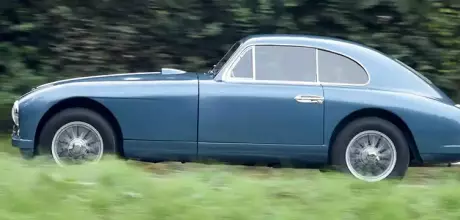1950 Aston Martin DB2 Vantage
Not only was this 1950 DB2 Vantage exhibited at the 1951 Earls Court Motor Show but it was built to Vantage spec and then raced in California.
WORDS AND PHOTOGRAPHY PAUL WALTON
DB2 VANTAGE
A rare DB2 Vantage that was not only the 1951 Earls Court Motor Show car but was also raced in California
No doubt everyone who attended the 1951 Earls Court Motor Show stopped to admire the pair of DB2s on Aston Martin’s stand, marvelling at their beautiful and voluptuous lines. The model might have been two years old, but due to slow production at the company’s Feltham facility, the DB2 still wouldn’t have been a common sight on UK roads. Few, though, would have noticed that the engine of the metallic blue saloon on Aston’s stand was uprated to Aston Martin’s new Vantage spec that had only become available earlier in the year.

Yet this was an important moment in the company’s post-war history since not only did it make the DB2 even more of a sports car, putting it on a par with those from Maranello and Modena, but it marked the start of the company’s long history of higher performance models that used the same name. Yet incredibly, this important show car survives. Chassis LML/50/109 was probably built in late 1950 since from the outset it was fitted with Aston Martin’s new and more powerful version of the W.O. Bentley-designed 2.6-litre straight-six that had become an option in the January the following year.
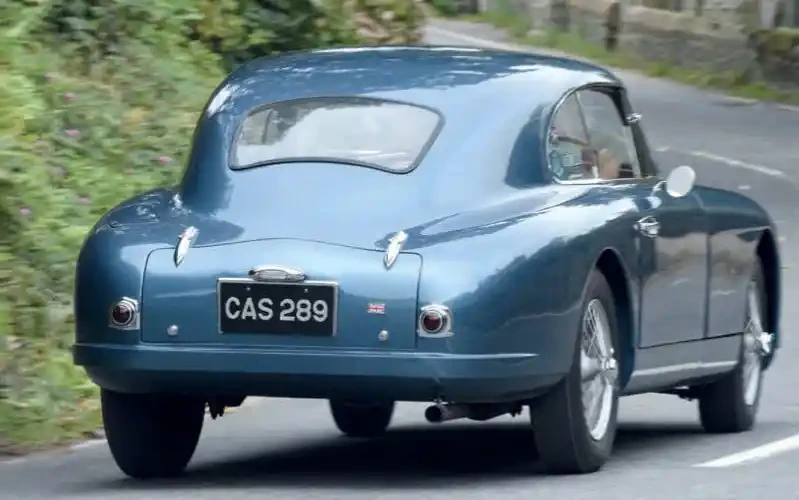
Thanks to a higher 8.16:1 compression ratio and larger SU HV6 carburettors, power was increased to 125bhp over the standard unit’s 105bhp. Called Vantage, it was a popular upgrade since just shy of 250 DB2s (in either saloon or drophead coupe form) of the 411 produced were upgraded.
But unlike the later versions, since it was an upgraded engine only, these early Vantages looked no different nor received any special badging meaning they were identical to the standard cars.
Yet the Vantage motor still made a huge difference to the DB2’s performance, which was ably demonstrated on the track. The cars Aston Martin had entered into the previous two 24 Hours of Le Mans were all in this 125bhp state of tune and they performed incredibly well, their best finish being a fi ne third in 1951. “The performance of these Aston Martins, which are all still running, and looking and sounding as good as ever, is perhaps the outstanding feature of the race,” reported Motorsport magazine in its July 1951 issue. The blue car must have initially been used as a works demonstrator since it was kept by the factory and displayed at the British Motor Show in October. “On the 1951 Earls Court stand will be displayed two Aston Martin DB2 saloons,” said a company press release before the event, “one fitted with the regular engine and one fitted with the ‘Vantage’ engine, the high-speed regularity of which was demonstrated so forcibly at Le Mans this year and last.”
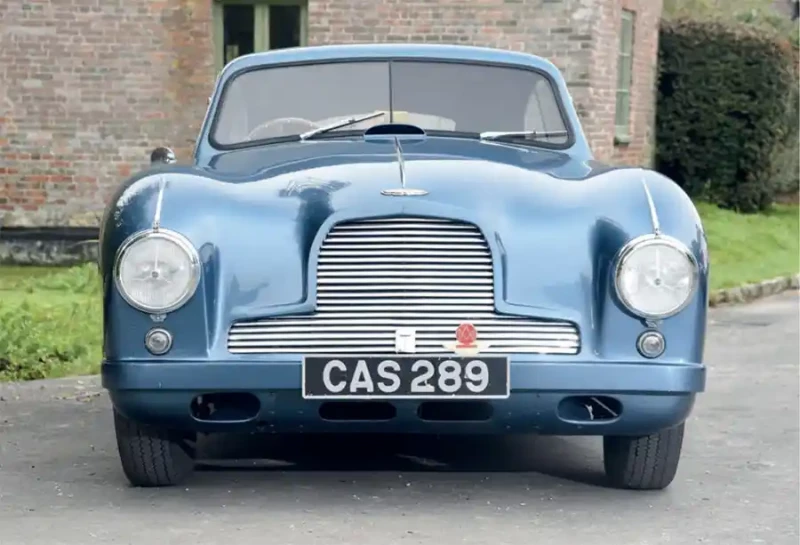
Amazingly, the second car – LML/50/110 – also survives and it too was later upgraded to Vantage spec. Following the show, the blue car was exported to California and delivered to a well-known British sports car specialist, Motors International, in March 1952. One of the mechanics there was a young Phil Hill, already an aspiring racing driver, who would go on to win the 1961 Formula 1 World Championship with Ferrari. He was also contributing to famed American magazine Road & Track, which in late 1951 tested a standard-engined DB2 that had been supplied by Motors International. Hill was so impressed by the car that he bought the example featured, expressing his thoughts to the magazine about it. “The Aston handles as well as any sports car I’ve driven, far better than any normal passenger car.”
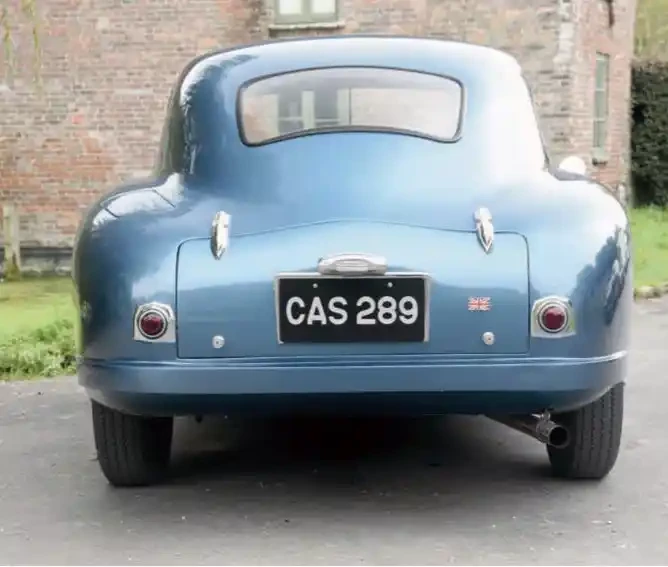
Hill was just as complimentary about the power the 2.6-litre engine delivered during a journey to Nevada. “I had the time of my life on the way to Reno – blowing off the best Detroit could off er – not only on the winding roads but on the straights.”
The blue DB2 Vantage was first bought by a Mr R.E. Gross from Hollister, a small town located 300 miles north of Beverly Hills, who perhaps bought it on the strength of Hill’s report. According to a letter by a later owner, Joseph F. Tanous, the car was then raced extensively throughout the west coast of America including at the Pebble Beach and Golden Gate circuits.
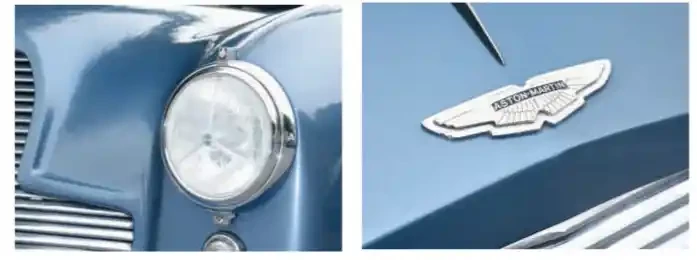
Although the Aston Martin changed hands several times over the next two decades, it stayed in California. Tanous says it was left in a garage sometime in the early Seventies and was forgotten about for 25 years. It was only in 1989 when he rescued the car and immediately started a seven-year restoration that altogether cost just short of $80,000. Although the work was extensive and covered all aspects of the car, this is still a significant sum for today, never mind three decades ago, especially considering when Tanous sold the DB2 at a Pebble Beach auction a decade later it reached $56,925.
It was bought by a well-known racer in Germany, Robert Leyba, who at the time owned the largest collection of Aston Martins in Europe. The fact that this included several important models such as one of the 1950 Le Mans works cars, VMF 65, plus a rare DB4 GT shows the significance he put on the DB2 Vantage. During its time with Leyba, the car featured in two German language motoring books, Englische Sportwagen and Aston Martin. He also travelled to Silverstone with it in 2000 for the 50th anniversary celebrations of the DB2.
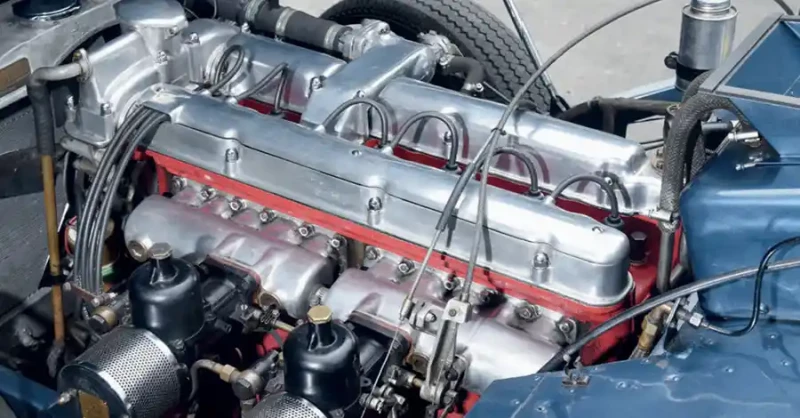
Unfortunately, poor health meant Robert had to sell much of his collection soon after and in 2002 the DB2 was put up for auction in the UK by Bonhams. It was the car’s shapely rear that caught the attention of Richard Royle who’d only popped into the sale for a brochure. “We walked in and there it was, the star of the show,” Richard tells me. “The lighting really showed off the shape and I thought, ‘Well, what is this?’”
Despite being more of a Jaguar enthusiast, still owning an XK convertible, Richard – like his late father before him – had always aspired to buying an Aston Martin and so he was the highest bidder on the Vantage. Yet that wasn’t the only Aston Martin he acquired that day. His wife, Michele, took a fancy to a silver 1954 DB2/4 coupe, chassis LML 666, that was originally registered to Katherine Martin, the wife of Aston Martin’s cofounder Lionel Martin, who is said to have designed the company’s first logo. And so Richard secured that too.
They quickly discovered, though, that the silver DB2/4 was in a poor condition and it was sold soon after. But the blue Vantage has been in their ownership ever since. I first saw the car at the AMOC’s 2023 concours event at Duxford and was so fascinated by its history that Richard kindly invited me to their Dorset home to learn more about it.

The restoration might have been 30 years ago but it’s still in a beautiful condition, no doubt testament to the original high price of the work. And it’s not that Richard and Michele haven’t used the car over the last two decades either. It has taken them across the UK for AMOC events, to Le Mans several times for the 24-hour race plus a major tour around Scotland which, including the journey there and back, totalled a tremendous 3,000 miles.
But as John Bolster said in a 1952 issue of Autocar about the DB2, “Whether one would go shopping, to the theatre, on a long-distance tour or even race at Le Mans, one could have no more perfect companion than the Aston Martin.” Seven decades later, that’s clearly still true.
Due to a worsening oil leak, the only attention the car has needed in this time was an engine rebuild before the journey north of the border.
It’s easy to understand how Richard and Michèle have travelled so many miles in the old car since once you clamber over the wide sill, the interior is surprisingly comfortable considering its diminutive dimensions. There’s even room behind the seats for an occasional bench that was an optional extra while the boot is a decent size for a Fifties sports car.
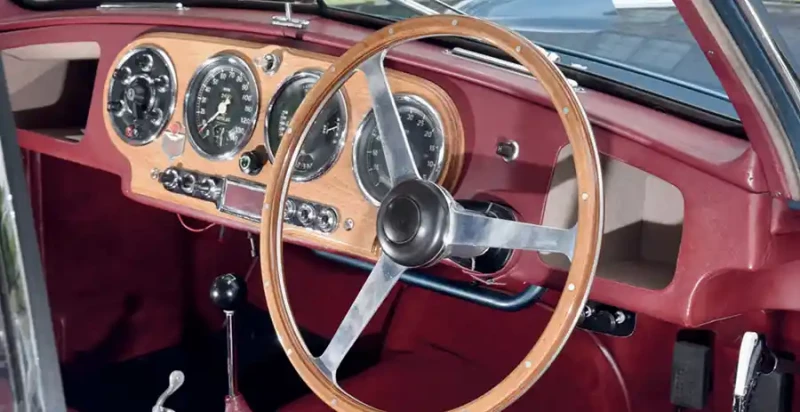
Phil Hill complained in the 1951 Road & Track article that the instruments weren’t very well marked and it took him, “a couple of days to become accustomed to them,” yet I reckon the dash is clearer than other cars of the era. It consists of just three large dials set into a piece of veneer in the centre of the fascia with a circular panel for the auxiliary controls to the far left. On the move, the 2.6-litre straight-six engine pulls strongly, more so than the 105bhp unit, needing little persuasion to deliver its chunky power.
This is matched by the familiar and distinctive gruff exhaust note that fills the cabin but is never too obtrusive. With direct steering and limited body roll, it’s easy to imagine the car racing in California all those years ago.
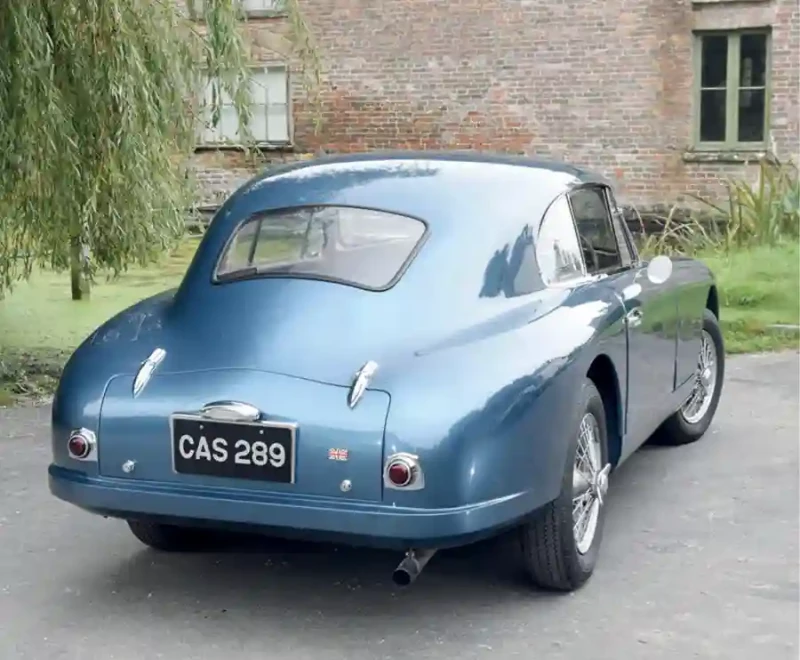
Although in terms of performance and design, Vantages have come a long way since 1951, it’s clear the original set the standard all later versions have followed. From the DB4 version of 1961 to the current V8 model, they all continue what the DB2 Vantage started. Yet what strikes me the most about Richard’s car, though, is how much attention it receives. The DB2 might still be a rarity on these roads, but the amount of glances and questions from passers-by reveal it’s just as appreciated now as when it was originally displayed at the motor show over 70 years ago.
Thanks to: Richard & Michèle Royle
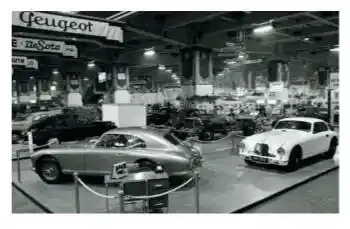
The blue DB2 Vantage (left) on Aston Martin’s stand at the 1951 Earls Court Motor Show


